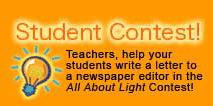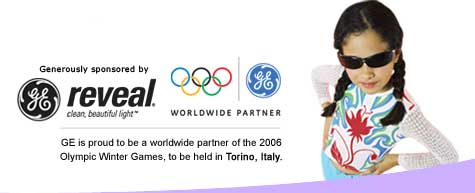 |
|||
|
Lesson 1: What Is Light? Goal: Learn how rainbows happen Time required: 40 minutes Materials: What Is Light? (PDF) Student Reproducible 1, pencil or pen, colored pencils or markers, white or light-colored wall, dishpan, water, small mirror, flashlight. Directions:
Answer Key: Data Table observations—answers may vary; 1. The water bent the light, splitting it into its spectrum; 2. The mirror bounced the split light back toward the wall so it could be seen; 3. Rainbows should be labeled in the following order: red, orange, yellow, green, blue, indigo, violet; 4. Spectrums appear elsewhere as rainbows in the sky, in a spray of water from a hose on a hot day, on the surface of soap bubbles, on CDs, etc. Writing extension: Have students write a descriptive paragraph
about a time when they would like to see a rainbow. Descriptions should
include how raindrops cause rainbows to appear.
View and print items marked (PDF) using Adobe Acrobat Reader© software, version 4.0 or higher. Items marked (PDF Form) feature editable areas. Save edits with version 7.0 or higher. Get
Adobe Reader for free.
|
 To get started, distribute this contest
entry form (PDF), contest
entry page (PDF), and family
contest activity (PDF).
Students Have a Chance to Win: • $5,000 or $1,250 U.S. savings bond
• Scholastic Inventor's Gift Pack of Books
Teachers Have a Chance to Win: • $250 GE Science Grant
• $250 Scholastic gift certificate
• One-year home supply of light bulbs
• Science-themed set of library books
Classrooms Have a Chance to Win: • Class visit from an Olympic athlete
• Class set of collectible GE Olympic Games
pins
All winners receive a collectible GE Olympic Games pin and a certificate of participation! Entries must be postmarked by GE and Reveal are trademarks
of
General Electric Company.
|
||

Photo Credits: © Digital Vision/PictureQuest; © Bananastock/PictureQuest.
|
|||